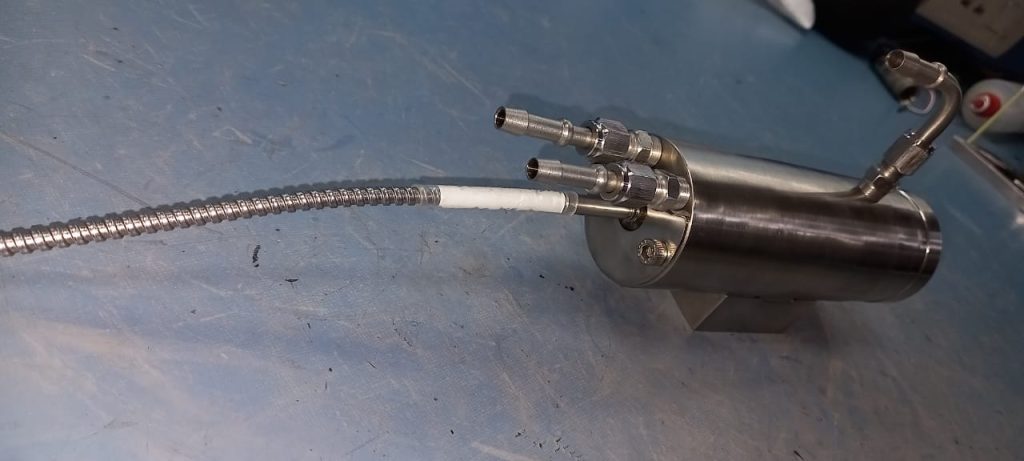Challenges When Using Infrared Sensors
Challenges When Using Infrared Sensors are common across many industries, as these tools—while highly accurate and non-contact—can face factors that impact reliability. By understanding these challenges and applying the right solutions, businesses can ensure optimal sensor performance, precise temperature measurement, and maximum return on investment.
Table of Contents
Environmental Interference (Dust, Smoke, and Steam)
The Challenge:
Industrial environments often include dust, smoke, or steam, which can scatter or absorb infrared radiation before it reaches the sensor. This leads to inaccurate or unstable readings.
How to Overcome It:
- Use sensors with special optical filters designed for harsh environments.
- Position sensors in cleaner zones whenever possible.
- Regularly maintain protective windows or housings to keep optics clear.
- Choose sensors, like those from Accurate Sensors Technologies (AST), engineered to handle high-particulate conditions.
Emissivity Variations
The Challenge:
Every material emits infrared energy differently, depending on its surface properties. Shiny metals, for example, reflect more radiation, making accurate readings difficult.
How to Overcome It:
- Adjust the emissivity setting on the sensor to match the target material.
- Apply a coating, tape, or paint with known emissivity to reflective surfaces.
- Use AST’s sensors, which feature advanced emissivity compensation algorithms for complex surfaces.

Temperature of Surroundings
The Challenge:
If the sensor itself is exposed to extreme ambient temperatures, accuracy may drop, or the device could be damaged.
How to Overcome It:
- Use cooling jackets or protective enclosures in high-heat areas.
- Select sensors with integrated cooling systems or extended ambient temperature ranges.
- Install in areas with proper ventilation to protect both the device and operator safety.

A250 With Cooling System
Measuring Small or Moving Targets
The Challenge:
In processes such as aluminum extrusion, glass production, or rolling steel, targets can be very small, thin, or moving at high speeds. This makes stable and precise measurement challenging.
How to Overcome It:
- Choose sensors with the correct optical resolution (spot size) for the target.
- Align the sensor carefully and ensure a clear line of sight.
- For moving targets, use high-speed response sensors to capture temperature in real time.

Calibration and Long-Term Accuracy
The Challenge:
Over time, even the most advanced sensors can drift and provide less accurate readings without proper calibration.
How to Overcome It:
- Establish a regular calibration schedule based on industry standards.
- Use certified calibration equipment or send sensors to an authorized lab.
- AST sensors are designed for long-term stability and easy recalibration to minimize downtime.
Electrical and Signal Interference
The Challenge:
In industrial plants, strong electromagnetic fields, vibration, and electrical noise can affect sensor signals.
How to Overcome It:
- Use shielded cables and proper grounding.
- Mount sensors in stable, low-vibration locations.
- Opt for models with digital communication outputs that resist interference.
Conclusion
Infrared Temperature Sensors provide significant advantages across industries, but their performance depends on addressing key challenges such as emissivity, environmental interference, and calibration. By understanding these factors and applying the right solutions, industries can ensure reliable, accurate, and safe temperature measurement. At Accurate Sensors Technologies (AST), we design infrared sensors that overcome these challenges, delivering precise results even in the harshest industrial conditions.
To learn more about infrared temperature sensors and explore AST’s solutions, visit our
Frequently Asked Questions about Infrared Temperature Sensors
Why do Infrared Temperature Sensors sometimes give fluctuating readings?
Fluctuations often occur due to dust, steam, or smoke in the measurement path, or when
the target surface has low emissivity. Using optical filters, emissivity adjustments, and
protective housings can stabilize readings.
Can Infrared Sensors measure shiny or reflective metals accurately?
Yes, but accuracy depends on setting the correct emissivity or applying a surface
coating. Many AST sensors are designed with advanced algorithms to handle reflective
materials like steel or aluminum.
How often should Infrared Sensors be calibrated?
Calibration frequency depends on the application and industry standards, but a routine
check every 6–12 months is recommended for maintaining high accuracy.
Are Infrared Temperature Sensors suitable for high-speed production lines?
Absolutely. With their fast response times, IR sensors are ideal for moving targets such
as aluminum extrusion profiles, rolling steel, or plastics on conveyor belts.
What is the best way to protect sensors in extreme industrial environments?
Use cooling jackets, protective housings, or models specifically designed for harsh
conditions. AST provides solutions tailored for dusty, smoky, or high-temperature areas.

